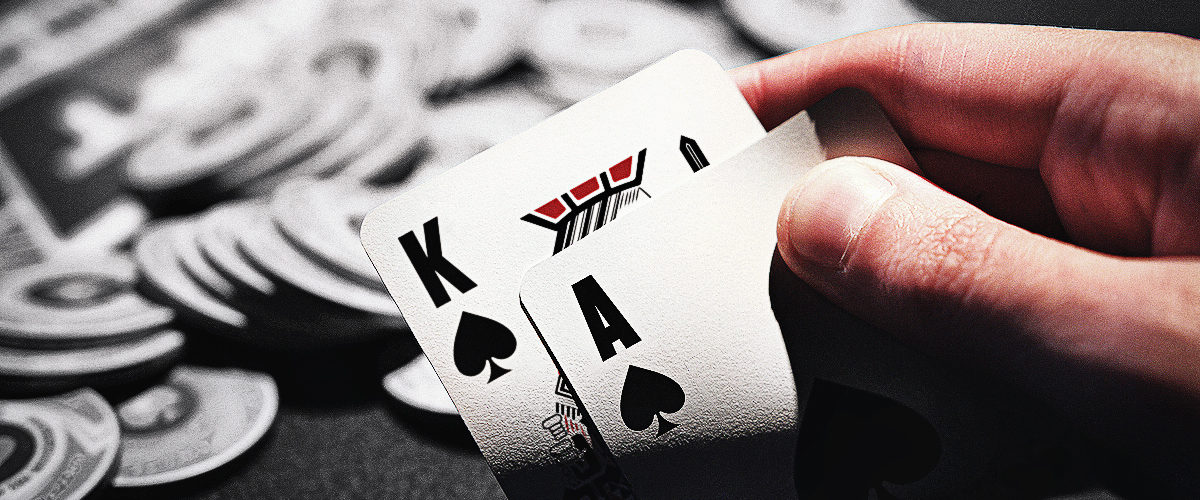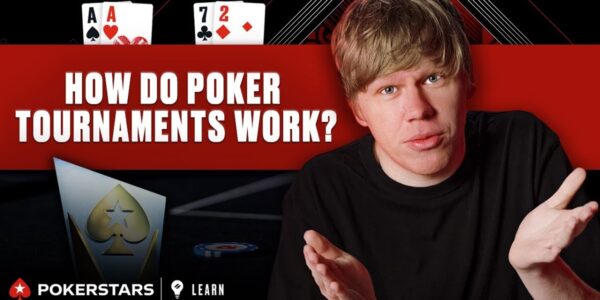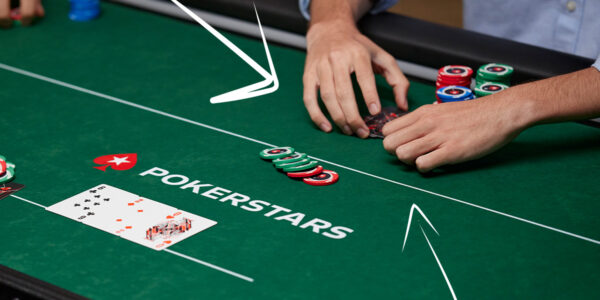Hand Reading for Beginners – Understanding Combos
In this series, we’ll be learning how to read our opponent’s range in order to find the best play against it. Today’s focus is hand combinations (known as ‘combos’ for short) and how understanding the odds of an opponent holding a certain hand can help us see the shape of his range; which parts are statistically more likely for him to hold; and which parts are less likely.
Introduction to Pre-Flop Combos
A combo is one way of making a particular set of two hole-cards. A♥ J♦ is one way of having the hand class – AJ. As there are four aces in the deck and four Jacks, there are sixteen ways of holding AJ before the flop.
Unpaired hands consist of 16 combos.
A more specific hand class and a sub-class of AJ is AJs (the s means suited) This hand class has only four combinations as there are only four suits: A♠ J♠ , A♥ J♥ , A♦ J♦ and A♣ J♣ .


Suited hands consist of 4 combos.
The other twelve combos of AJ are AJo – the o meaning off-suit. In this hand class, each Ace can only be coupled with three different Jacks because the two cards must be of different suits. The combos of AJo are: A♠ J♥ , A♠ J♦ , A♠ J♣ , A♥ J♠ , A♥ J♦ , A♥ J♣ , A♦ J♠ , A♦ J♥ , A♦ J♣ , A♣ J♠ , A♣ J♥ and A♣ J♦ .
Offsuit hands consist of 12 combos.
AA is a paired hand class which consists of the following combos: A♠ A♥ , A♠ A♦ , A♠ A♣ , A♥ A♦ , A♥ A♣ , A♦ A♣ .
Pocket Pairs consist of 6 combos.
Blocking Pre-Flop Combos
When your hand contains an Ace, your opponent’s range contains less combos of the Ax hand class than it usually would. For example, if you have A♣ 5♣ then you remove the A♣ from the deck. Now when your opponent raises on the Button – an action he will take with every combo of AJ, he only has three suited combos (A♠ J♠ , A♥ J♥ and A♦ J♦ ) and only nine offsuit combos (A♠ J♥ , A♠ J♦ , A♠ J♣ , A♥ J♠ , A♥ J♦ , A♥ J♣ , A♦ J♠ , A♦ J♥ , A♦ J♣ )
When you hold a blocker, unpaired hand classes consist of only 9 combos. You decrease their likelihood by 25%.
The effect our Ace has on Villain’s pairs of aces is even more dramatic. A♠ A♣ , A♥ A♣ and A♦ A♣ are no longer possible. Villain can only make AA by having one of: (A♠ A♥ , A♠ A♦ , A♥ A♦ )
When you hold a blocker, paired hand classes consist of only 3 combos. You reduce their likelihood by 50%.
Introduction to Post-Flop Combos
Post-flop, it is usually mathematically easier to have nothing than to have something, at least before you’ve taken any bet or call actions. When Button raises pre-flop and Big Blind calls, both players have mostly unmade hands on a dry flop like 7♣ 3♦ 3♠ . This is because, as we saw, pre-flop ranges contain many more combos of unpaired hands than paired hands and a board like this one doesn’t do too much to change that.
Even if you look only at A7 and A8, it is more likely that BU has A8 than A7 on this flop. Just as our hole cards could block Villain’s range pre-flop, the board can block his range on the flop. Since the 7♣ is removed from the deck, the Button cannot have A♣ 7♣ , A♠ 7♣ , A♥ 7♣ , or A♦ 7♣ , but can have the A8 versions of these suits. There are still sixteen A8 combos but now only twelve A7 combos.
One reason that it is so hard to flop a very big hand is that there are hardly any combos of very big hands. On the 7c3d3s flop, the button might have A3s (2 combos), A3o (6 combos), K3s (2 combos), Q3s (2 combos), 53s (2 combos) and 43s (2 combos). There are only 14 total combos of 3x in his range here. J9 alone (suited and offsuit) is 16 combos.
The Button is more likely to hold exactly J9 than he is to hold a three on a flop of 773.
When we factor in all of the other random unpaired holdings the Button opens (QT KJ T9 etc.) him flopping trips becomes an extremely rare occurrence. Moreover, if the Big Blind happens to be lucky enough to hold a three then this possibility becomes even more remote. If Big Blind has a 3x hand, then BU will have only 7 combos of trips (note 77 is called a set, not trips.)
Using Combos to Catch Bluffs
At 100NL ZOOM, I decided to raise A♣ 4♥ on the Cut-Off and was called by the Big Blind. The flop came Q♥ 10♠ 5♣ . My opponent checked and I bet one third of the pot, Villain called. The turn was the 4♣ and both players checked. On the 7♣ river, my opponent led out for half of the pot. I need to win only 25% of the time to break even on a call here. Can combos help us determine if I should call this bet?
Well, assuming Villain defends all of the KJo in this way pre-flop, then he has 12 combos of it. If he also has J9s and J9o then that’s a further 16 combos of potential bluffs. Moreover, my opponent might also have some other bluffs in the form of missed hearts. Each hand like A♥ 2♥ is only one combo, but we can think up quite a few hands like this which might bluff the river. There is also an available slew of missed gutshots like K9o, K9s, and J8s. Essentially there are a LOT of combos of potential bluffs here. Villain will not need to bluff very often before his betting range becomes quite bluff-heavy. For folding to be correct, I need to be losing 75% of the time or more, meaning that Villain must have a 3:1 ratio of value hands to bluffs in his range. It seems very unlikely that this could be true given how many possible bluffs there are. Villain would have to be very anti-bluffing and/or be betting a lot of very weak value hands like 77 or 5x for him to achieve such a large ratio of value to bluffs.
I make the call and am shown K♠ J♣ – one of the many combos of available bluffs. These situations where many draws miss are overbluffed meaning that players can easily end up bluffing too often for the price they are laying on a call. Understanding how abundant bluff combos can be on these boards is the key to making winning calls with fairly weak hands.











